Anthocyanins
How to submit an article:
- Registered users can submit any published journal article that has a unique DOI (Digital Object Identifier) name or link to Research Hub.
- For example, you can paste the full DOI link:
https://doi.org/10.1109/5.771073or just the DOI name:10.1109/5.771073into the field above and click submit. - The person who is first to submit a valid article to Research Hub will forever be credited for it, and every article submission earns you +6 Research Points.
Published research studies are articles that present the findings of original research that has undergone a peer-review process and has been made publicly available in scholarly journals, books or other media.
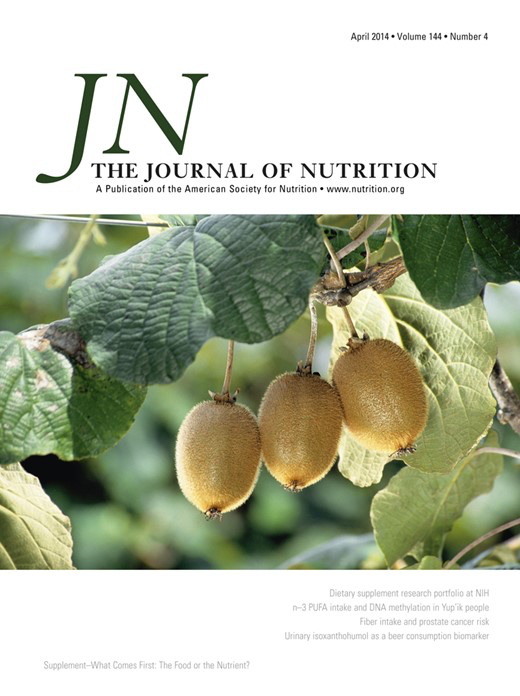
Intake of Blueberries, Anthocyanins, and Risk of Eye Disease in Women
2024 Apr The Journal of Nutrition Sesso HD, Rautiainen S, Park SJ, Kim E, Lee IM, Glynn RJ, et al.
Cohort Study Clinical Study Eye Health Age-Related Macular Degeneration Anthocyanins BlueberryGreater intake of blueberries considerably decreases the risk of age-related macular degeneration, while a remarkable dietary intake of anthocyanins inversely correlates with cataract incidents.

The Extraction and High Antiproliferative Effect of Anthocyanin from Gardenblue Blueberry
2023 Mar 22 Molecules Zhao F, Wang J, Wang W, Lyu L, Wu W, Li W
Experimental Study BlueberryThe anthocyanins from the Gardenblue variety of blueberries exhibit strong antiproliferative effects on various cancer cells, especially liver cancer cells.
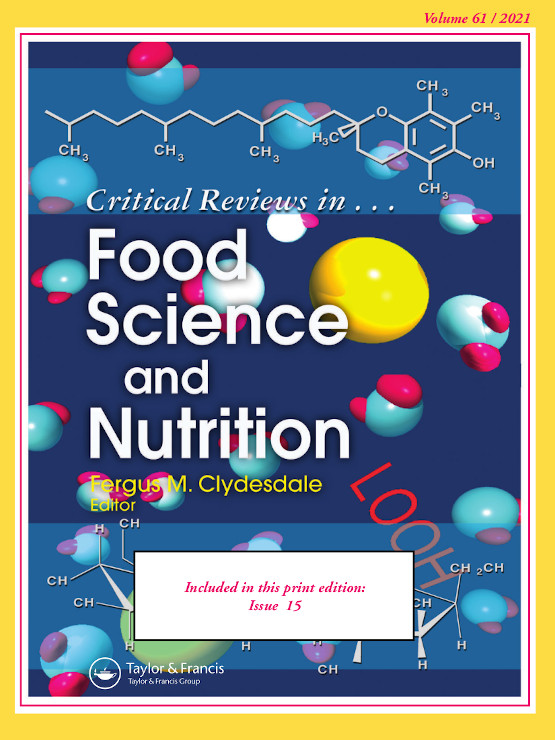
Black soybean (Glycine max(L.) Merr.): paving the way toward new nutraceutical
2022 Feb 10 Critical Reviews in Food Science and Nutrition Kumar M, Suhag R, Hasan M, Dhumal S, Radha , Pandiselvam R, et al.
Review Article Black SoybeanModern extraction techniques improve the extraction of bioactive compounds from black soybeans, which have potential use in functional foods and nutraceutical components.
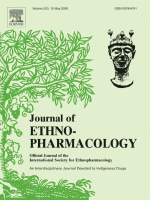
Crocus sativus (saffron) petals extract and its active ingredient, anthocyanin improves ovarian dysfunction, regulation of inflammatory genes and antioxidant factors in testosterone-induced PCOS mice
2022 Jan Journal of Ethnopharmacology Moshfegh F, Balanejad SZ, Shahrokhabady K, Attaranzadeh A
Experimental Study Animal Study PCOS Anti-Inflammatory Hormonal ImbalanceSaffron petal extract and anthocyanins can alleviate symptoms of Polycystic Ovary Syndrome by rectifying hormonal imbalances and reducing inflammation in PCOS mice.
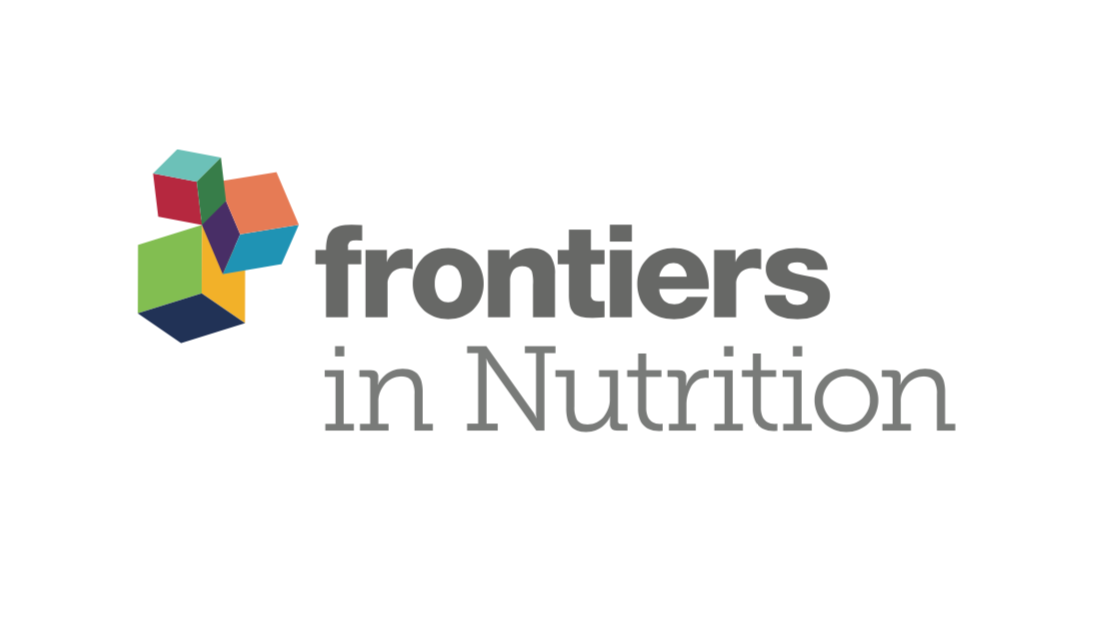
Effects of Flavonoid Supplementation on Common Eye Disorders: A Systematic Review and Meta-Analysis of Clinical Trials
2021 May 25 Frontiers in Nutrition Davinelli S, Ali S, Scapagnini G, Costagliola C
The pooled results, based on 11 intervention trials involving 724 participants, suggest an overall significant effect of flavonoids on common ophthalmic disorders. Flavan-3-ols and anthocyanins are identified as effective interventions for improving outcomes in ocular conditions. However, evidence on the efficacy of several other flavonoid subclasses is deemed insufficient. The study concludes that while flavonoids may improve clinical manifestations associated with ocular disorders, further well-constructed clinical trials are needed to confirm these findings and explore the effects of flavonoids on other eye disorders.
Systematic Review Meta-Analysis Dietary FlavonoidsResearch insights are moderated by the Research Hub team and offer an at-a-glance overview of interesting research findings.

2024 The Journal of Nutrition
Greater intake of blueberries considerably decreases the risk of age-related macular degeneration, while a remarkable dietary intake of anthocyanins inversely correlates with cataract incidents.
Cohort Study Age-Related Macular Degeneration Blueberry Eye Health
Intake of Blueberries, Anthocyanins, and Risk of Eye Disease in Women
Sesso HD, Rautiainen S, Park SJ, Kim E, Lee IM, Glynn RJ, et al.

2023 Molecules
The anthocyanins from the Gardenblue variety of blueberries exhibit strong antiproliferative effects on various cancer cells, especially liver cancer cells.
Experimental Study Blueberry
The Extraction and High Antiproliferative Effect of Anthocyanin from Gardenblue Blueberry
Zhao F, Wang J, Wang W, Lyu L, Wu W, Li W

2022 Critical Reviews in Food Science and Nutrition
Modern extraction techniques improve the extraction of bioactive compounds from black soybeans, which have potential use in functional foods and nutraceutical components.
Review Article Black Soybean
Black soybean (Glycine max(L.) Merr.): paving the way toward new nutraceutical
Kumar M, Suhag R, Hasan M, Dhumal S, Radha , Pandiselvam R, et al.

2022 Journal of Ethnopharmacology
Saffron petal extract and anthocyanins can alleviate symptoms of Polycystic Ovary Syndrome by rectifying hormonal imbalances and reducing inflammation in PCOS mice.
Experimental Study Anti-Inflammatory Hormonal Imbalance PCOS
Crocus sativus (saffron) petals extract and its active ingredient, anthocyanin improves ovarian dysfunction, regulation of inflammatory genes and antioxidant factors in testosterone-induced PCOS mice
Moshfegh F, Balanejad SZ, Shahrokhabady K, Attaranzadeh A
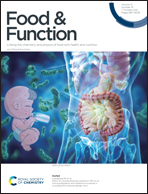
2021 Food & Function
Consumption of blueberries can alter levels of certain beneficial compounds in the blood, potentially contributing to improved cognitive function in older adults.
Clinical Study
Blueberry phenolics are associated with cognitive enhancement in supplemented healthy older adults
Rutledge GA, Sandhu AK, Miller MG, Edirisinghe I, Burton-Freeman BB, Shukitt-Hale B
Review Articles
Review articles summarise and critically evaluate the current state of research on a specific topic or field by synthesising multiple primary research studies.

Black soybean (Glycine max(L.) Merr.): paving the way toward new nutraceutical
2022 Feb 10 Critical Reviews in Food Science and Nutrition Kumar M, Suhag R, Hasan M, Dhumal S, Radha , Pandiselvam R, et al.
Review Article Black SoybeanModern extraction techniques improve the extraction of bioactive compounds from black soybeans, which have potential use in functional foods and nutraceutical components.

Effects of Flavonoid Supplementation on Common Eye Disorders: A Systematic Review and Meta-Analysis of Clinical Trials
2021 May 25 Frontiers in Nutrition Davinelli S, Ali S, Scapagnini G, Costagliola C
The pooled results, based on 11 intervention trials involving 724 participants, suggest an overall significant effect of flavonoids on common ophthalmic disorders. Flavan-3-ols and anthocyanins are identified as effective interventions for improving outcomes in ocular conditions. However, evidence on the efficacy of several other flavonoid subclasses is deemed insufficient. The study concludes that while flavonoids may improve clinical manifestations associated with ocular disorders, further well-constructed clinical trials are needed to confirm these findings and explore the effects of flavonoids on other eye disorders.
Systematic Review Meta-Analysis Dietary Flavonoids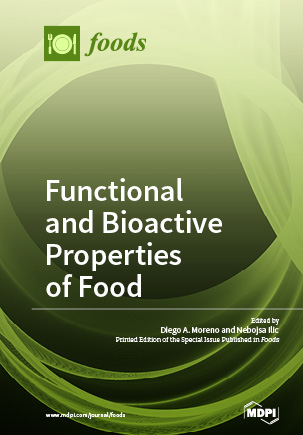
Morus alba L. Plant: Bioactive Compounds and Potential as a Functional Food Ingredient
2021 Mar 23 Foods Chen C, Mohamad Razali UH, Saikim FH, Mahyudin A, Mohd Noor NQI
Taken together, M. alba leaves and fruit have a high content of bioactive compounds such as phenolic acids, flavonoids, flavonols, anthocyanins, macronutrients, vitamins, and volatile aromatic compounds. These compounds contribute significantly to the properties of M. alba in preventing and treating illnesses such as oxidative stress, diabetes, hyperlipidaemia, neurological disorders, microbial infections, and cancer.
Review Article Sang Ye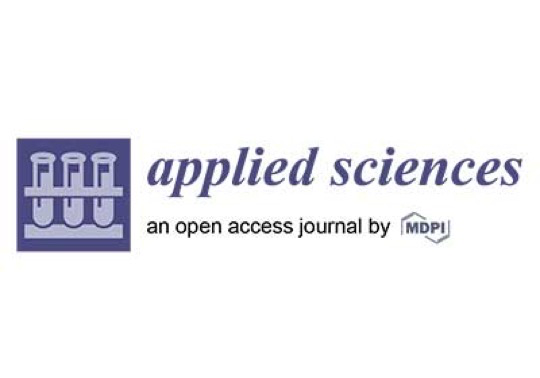
Biochemical Composition of Eggplant Fruits: A Review
2020 Jul 30 Applied Sciences Meenakshi Sharma and Prashant Kaushik
Systematic Review EggplantEggplant may possibly be used in the treatment of anemia, atherosclerosis, and fatty degeneration.

Therapeutic Effects of Anthocyanins for Vision and Eye Health
2019 Sep 11 Molecules Nomi , Iwasaki-Kurashige , Matsumoto
Clinical Study Review Article VisionAnthocyanin supplements improve vision health by relaxing ciliary muscles, regenerating rhodopsin, and enhancing retinal blood circulation.
Clinical Trials
Clinical trials are research studies that involve people and are conducted to evaluate the safety and efficacy of new treatments or interventions, such as drugs, medical devices, or behavioural therapies.
Study Protocols
Published study protocols are detailed plans that outline the objectives, methodology, statistical analyses, and organisation of a research study that have been made publicly available for others to review and use as a reference.
Presentation Slides

Cohort Study
Greater intake of blueberries considerably decreases the risk of age-related macular degeneration, while a remarkable dietary intake of anthocyanins inversely correlates with cataract incidents.
Sesso HD, Rautiainen S, Park SJ, Kim E, Lee IM, Glynn RJ, Buring JE, Christen WG

Experimental Study
The anthocyanins from the Gardenblue variety of blueberries exhibit strong antiproliferative effects on various cancer cells, especially liver cancer cells.
Zhao F, Wang J, Wang W, Lyu L, Wu W, Li W

Review Article
Modern extraction techniques improve the extraction of bioactive compounds from black soybeans, which have potential use in functional foods and nutraceutical components.
Kumar M, Suhag R, Hasan M, Dhumal S, Radha , Pandiselvam R, Senapathy M, Sampathrajan V, Punia S, Sayed AAS, Singh S, Kennedy JF

Experimental Study
Saffron petal extract and anthocyanins can alleviate symptoms of Polycystic Ovary Syndrome by rectifying hormonal imbalances and reducing inflammation in PCOS mice.
Moshfegh F, Balanejad SZ, Shahrokhabady K, Attaranzadeh A

Clinical Study
Consumption of blueberries can alter levels of certain beneficial compounds in the blood, potentially contributing to improved cognitive function in older adults.
Rutledge GA, Sandhu AK, Miller MG, Edirisinghe I, Burton-Freeman BB, Shukitt-Hale B

Systematic Review
Eggplant may possibly be used in the treatment of anemia, atherosclerosis, and fatty degeneration.
Meenakshi Sharma and Prashant Kaushik

Clinical Study
Anthocyanin supplements improve vision health by relaxing ciliary muscles, regenerating rhodopsin, and enhancing retinal blood circulation.
Nomi , Iwasaki-Kurashige , Matsumoto

Review Article
Blueberry anthocyanins have a potential role in preventing osteoporosis and demonstrate positive antioxidant and anti-inflammatory activity.
, Jones DR
Executive Summary
Write an executive summary in the form of a blog article on the topic of "Research into Chinese medicine treatment for Anthocyanins" summarising the research below and using language that can be easily understood by patients and avoiding medical jargon using a professional and caring tone of voice.
Write an executive summary in the form of a blog article on the topic of "Researched Chinese medicine treatments for Anthocyanins" summarising the research below in an objective and easy to understand way, and using language that can be easily understood by patients. Group the article into Chinese medicine treatments first, followed by nutrition and other treatments. Avoid using medical jargon and use a professional and caring tone of voice.
Write me a concise but easy to understand executive summary on the topic of "Chinese medicine treatments for Anthocyanins" based on the following research that I will give you. Your summary should be 2 paragraphs long in Australian English spelling and include references to the studies.
A Cohort Study published in 2024 in the journal The Journal of Nutrition found that Greater intake of blueberries considerably decreases the risk of age-related macular degeneration, while a remarkable dietary intake of anthocyanins inversely correlates with cataract incidents. Middle-aged and older women, numbering 36,653 and 35,402 originally without cataract and AMD, provided data for the study via semiquantitative food frequency questionnaires. Insights were derived on the consumption of blueberries by these women, with frequency varied from none to over two servings weekly. Additionally, total anthocyanin consumption was analysed, with major subclasses adjusted for energy and then into quintiles. Self-reported risk factors for eye diseases were adjusted in the multivariable hazard ratios. On analysis, it was found that a significant portion of participants consumed a minimum of one serving of blueberries weekly. Thus, compared to no blueberry intake, it was observed that those consuming the fruit exhibited a decrease in the total instances of AMD, while visually significant AMD remained unaffected. Furthermore, dietary anthocyanin showed a modest yet significant inverse association with cataract occurrences, but no notable correlation with AMD.
A Experimental Study published in 2023 in the journal Molecules found that The anthocyanins from the Gardenblue variety of blueberries exhibit strong antiproliferative effects on various cancer cells, especially liver cancer cells. 65 varieties of blueberries were collected, focusing on their nutritional and functional values. Among these, the Gardenblue variety showed the highest anthocyanin content in fresh fruit. This content was further increased through the process of ultrasound-assisted solvent extraction and macroporous resin absorption, transforming it into a dried powder. Biological experiments were then conducted to determine the antiproliferative effects of Gardenblue anthocyanins on various cancer cell strains, such as cervical, liver, breast, and lung cells. Furthermore, these anthocyanins were combined with the chemotherapy drugs, cisplatin and doxorubicin, to assess any potential enhanced antiproliferative effects. The research results confirmed that Gardenblue anthocyanins exert a substantial antiproliferative effect on multiple cancer cell types, particularly hepatoma or liver cancer cells. These anthocyanins displayed no evident toxic effects, as measured by the MTT assay, a laboratory colorimetric technique. Notably, the antiproliferative benefits were amplified when the anthocyanins were combined with doxorubicin, a treatment for liver cancer. Analysis suggests that the anthocyanins might induce cell apoptosis (cell death) by bonding with DNA in a manner that modifies or damages the DNA, thus preventing cell proliferation. This suggests potential application of Gardenblue anthocyanin extract as a functional agent against liver cancer cells.
A Review Article published in 2022 in the journal Critical Reviews in Food Science and Nutrition found that Modern extraction techniques improve the extraction of bioactive compounds from black soybeans, which have potential use in functional foods and nutraceutical components. These modern extraction techniques involve the application of technologies such as microwaves, ultrasounds, and enzymes. Contrary to traditional methods that depend on simple yet toxic solvents, these contemporary options yield higher amounts of bioactive substances from black soybeans, are quicker, and are less damaging to the environment. The exact bioactive compounds extracted include anthocyanins, phenolic acids, isoflavones, and flavones, among others. Researchers discovered that black soybeans, and specifically their seed coat, are rich in various bioactive compounds. These compounds have been reported to possess numerous health benefits, showing antioxidant, anti-cancer, anti-diabetic, anti-obesity, anti-inflammatory, cardio and neuroprotective activities. The study also explores how these soybean extracts have been used in the manufacture of food products like noodles, in the development of biodegradable films with pH sensitivity, and in therapeutic applications such as promoting wound healing and alleviating inflammation. The comprehensive review, therefore, serves as a handy reference for food manufacturers and scientists, showcasing the vast potential of black soybeans in the development of functional foods and nutraceuticals.
A Experimental Study published in 2022 in the journal Journal of Ethnopharmacology found that Saffron petal extract and anthocyanins can alleviate symptoms of Polycystic Ovary Syndrome by rectifying hormonal imbalances and reducing inflammation in PCOS mice. The study conducted experiments on mice induced with Polycystic Ovary Syndrome (PCOS) through the injection of testosterone enanthate. These mice were then treated with saffron petal extract and anthocyanins to observe the effect on their ovarian hormones, steroidogenic enzymes, ovarian dysfunction, regulation of anti-inflammatory genes, and antioxidant factors. The treatment was found to decrease the elevated levels of luteinizing hormone, testosterone, and estrogen in the PCOS mice, while reviving the reduced follicular-stimulating hormone and progesterone levels. In discussion of the results, it was observed that saffron petal extract and anthocyanins positively altered the levels of gonadotropin receptors, steroid receptors, inflammatory markers, inflammatory-related factors, and antioxidant enzymes that were affected by the PCOS condition in the subject mice. The study also noted that the reproductive tissues of the PCOS mice, which were converted into androgen-dominant environments by the testosterone enanthate induction, were restored into estrogenic conditions after the treatment. Further findings suggested that saffron petal extract and anthocyanins led to amelioration of PCOS symptoms by enhancing the regulation of ovarian steroids, steroidogenic processes, antioxidant enzyme production, and inflammatory markers.
A Clinical Study published in 2021 in the journal Food & Function found that Consumption of blueberries can alter levels of certain beneficial compounds in the blood, potentially contributing to improved cognitive function in older adults. The research method involved a study on 38 healthy older adults between 60 to 75 years of age, over a 90-day period. Participants were randomly assigned to two groups – a blueberry group and a control group. The blueberry group received 24 grams of freeze-dried blueberries, equivalent to a cup of fresh berries, every day, while the control group received no treatment. Blood samples were taken from the subjects before breakfast and two hours post-breakfast, on the start day, the 45th day and the 90th day. Additionally, the study subjects also took cognitive tests on these days. Results showed that after 90 days, there were significant changes in the levels of circulating phenolic compounds, including such compounds as hippuric acid, phloroglucinaldehyde and syringic acid, among others, in the blood of those who had consumed blueberries. Moreover, improvements in cognitive functions were observed and these changes were linked to alterations in the concentrations of specific phenolic compounds like ferulic acid-glucuronide, syringic acid, and malvidin-3-galactoside. These results suggest a correlation between daily blueberry consumption, changes in phenolic compounds in the blood, and improvements in brain performance.
A Systematic Review published in 2020 in the journal Applied Sciences found that Eggplant may possibly be used in the treatment of anemia, atherosclerosis, and fatty degeneration. Eggplant is progressively becoming more well-known due to its composition of carbohydrates, proteins, vitamins, and several other bioactive compounds, such as phenolic acids. Eggplant also contains traces of minerals such as copper, zinc, and iron. Due to this biochemical composition, eggplant may possibly be used in the treatment of anemia, atherosclerosis, and fatty degeneration. Its antioxidant property potentially reduces the risk of various types of cancer, protects against cardiovascular diseases, and prevents acute respiratory infections. Further, eggplant fibers help in digestion by removing toxins and harmful materials from the stomach and reducing colon cancer. Plant polyphenols present in eggplants can help protect cell membranes and boost the brain’s memory function.
A Clinical Study published in 2019 in the journal Molecules found that Anthocyanin supplements improve vision health by relaxing ciliary muscles, regenerating rhodopsin, and enhancing retinal blood circulation. The methodology of this review involved studying the effects of Anthocyanin, a supplement popular for eye health. Despite the low bioavailability of Anthocyanin, the supplement is reported to appear in intact form and in various metabolites. The review observes how Anthocyanin crosses barriers within the blood to reach the ocular area. The study also performed an in vitro analysis to comprehend how Anthocyanin impacts the ciliary muscles of the eye, crucial in treating vision conditions like myopia and glaucoma. Findings of the review reveal that Anthocyanin also stimulates the reformation of rhodopsin in the rod outer segment of frogs. The compound further demonstrated how to control eye elongation in a model of chick myopia induced by a negative lens. Ultimately, the review consolidated multiple clinical studies that provide evidence for the improvement of dark adaptation and transient myopic shift following intake of Anthocyanin. The supplement notably improves retinal blood circulation among patients with normal tension glaucoma.
A Review Article published in 2018 in the journal Advances in Food Technology and Nutritional Sciences - Open Journal found that Blueberry anthocyanins have a potential role in preventing osteoporosis and demonstrate positive antioxidant and anti-inflammatory activity. The methodology of the research involved gathering prior studies and examining the in vitro and in vivo evidence surrounding anthocyanin content and bioavailability from blueberries. The focus of these studies was on both individual chemical structures and the diversity of anthocyanins found in blueberries. The main findings showed that anthocyanins, especially from blueberries, can have a positive impact on bone health. More specifically, they could improve the balance between osteoblasts, cells that form bone, and osteoclasts, cells that dissolve bone. This could potentially prevent osteoporosis. Moreover, even though direct anthocyanin effects on joints from blueberries have not been widely reported, existing studies of isolated anthocyanins common to the blueberry but from other foods, show promising antioxidant and anti-inflammatory activity.
Moderation Tools
Topic
Sign In
Users not signed in are limited to viewing the 5 most recent items of content.